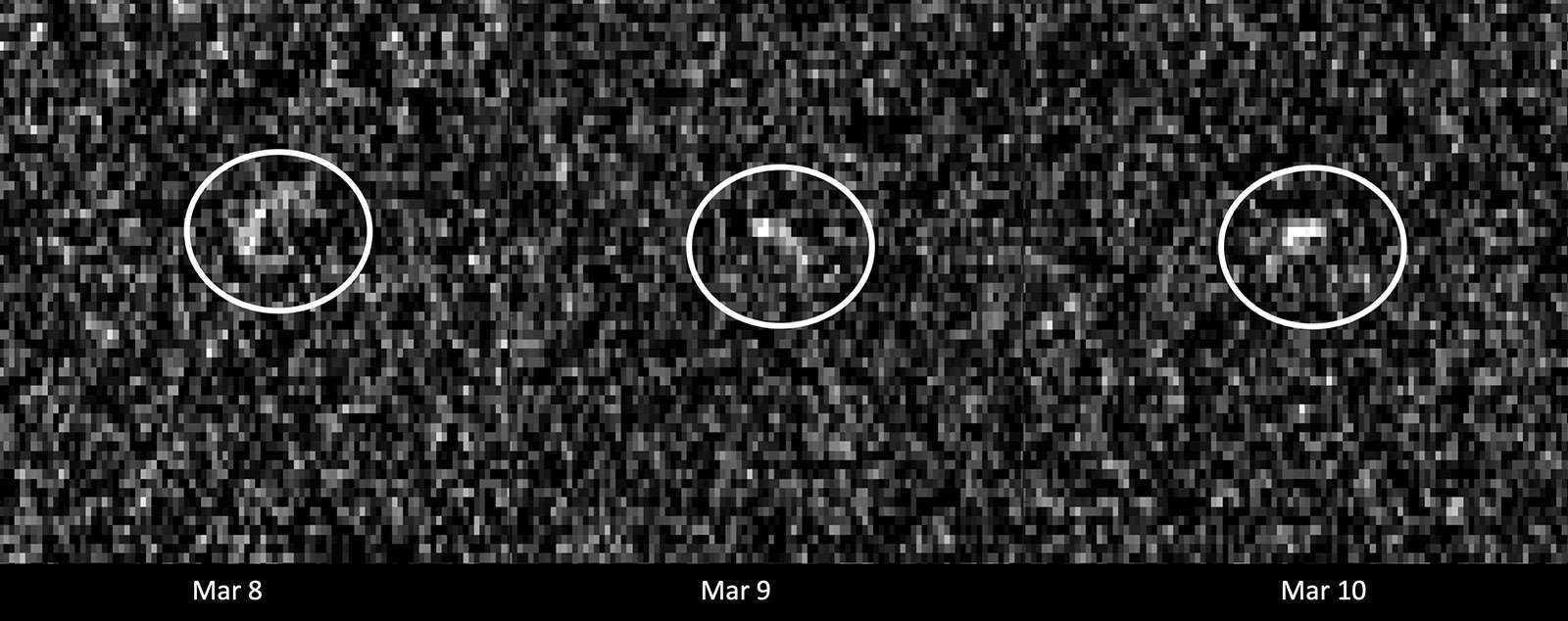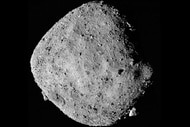Create a free profile to get unlimited access to exclusive videos, sweepstakes, and more!
Relax, humans, the earth is safe from the asteroid Apophis...for now

Good news, people of Earth. That asteroid that astronomers warned may hit Earth in the year 2068 will not in fact crash into us in 47 years. So you can all breathe a sigh of relief.
That's right. NASA scientists believe we're safe from the asteroid dubbed Apophis colliding into Earth...for at least another 100 years.
After being discovered in 2004, the asteroid dubbed Apophis — named after Ra’s serpent-like enemy from Egyptian myth — was believed to pose a risk of impacting Earth in 2068. Granted, it was always a very slim chance of hitting the planet (in fact, the odds were literally astronomical). But it was enough of a risk for NASA and the European Space Agency to place the asteroid on their risk lists.
Now, after 17 years of observations and orbit analysis, the asteroid’s orbit has become better determined, and NASA and the ESA are both ruling out any possibility of Apophis impacting our planet for at least a century.
“A 2068 impact is not in the realm of possibility anymore, and our calculations don’t show any impact risk for at least the next 100 years,” said Davide Farnocchia of NASA’s Center for Near-Earth Object Studies, in a statement issued by NASA.
Added Farnocchia: “With the support of recent optical observations and additional radar observations, the uncertainty in Apophis’ orbit has collapsed from hundreds of kilometers to just a handful of kilometers when projected to 2029. This greatly improved knowledge of its position in 2029 provides more certainty of its future motion, so we can now remove Apophis from the risk list.”
And the ESA also took the asteroid off its risk list as well.
So, let's say it again: phew!
Apophis, an object that is estimated to be about 1,100 feet across, quickly gained notoriety when its trajectory suggested that it could hit the Earth in 2029, but experts quickly ruled out this risk, as well as a risk that it could hit Earth in 2036.
The animation from NASA above shows the asteroid's orbital trajectory as it zooms safely past Earth on April 13, 2029, during which time Apophis will be observable to people in the Eastern Hemisphere without the use of a telescope or binoculars. The science suggests that asteroids are far more fun to observe when they're not about to come crashing down on your face.
But while collisions in 2029 and 2036 were ruled out, Apophis hitting the planet in 2068 remained a possibility up until this month. When Apophis made a flyby around March 5, astronomers used the radio antenna at the Deep Space Network’s Goldstone Deep Space Communications Complex in California to refine their estimate of the asteroid’s orbit around the sun more precisely.
After doing this, they were confidently able to rule out any risk of impact in 2068 and long after. Goldstone also worked with the Green Bank Telescope in West Virginia to allow imaging (albeit highly pixelated imaging) of Apophis.
“Although Apophis made a recent close approach with Earth, it was still nearly 10.6 million miles away,” said NASA Jet Propulsion Laboratory scientist Marina Brozovic, who led the radar campaign. “Even so, we were able to acquire incredibly precise information about its distance to an accuracy of about 150 meters.”
So, rest easy, fellow Earthlings. Apophis apparently means us no harm. At least, it means us no harm for the next 100 years or so.













